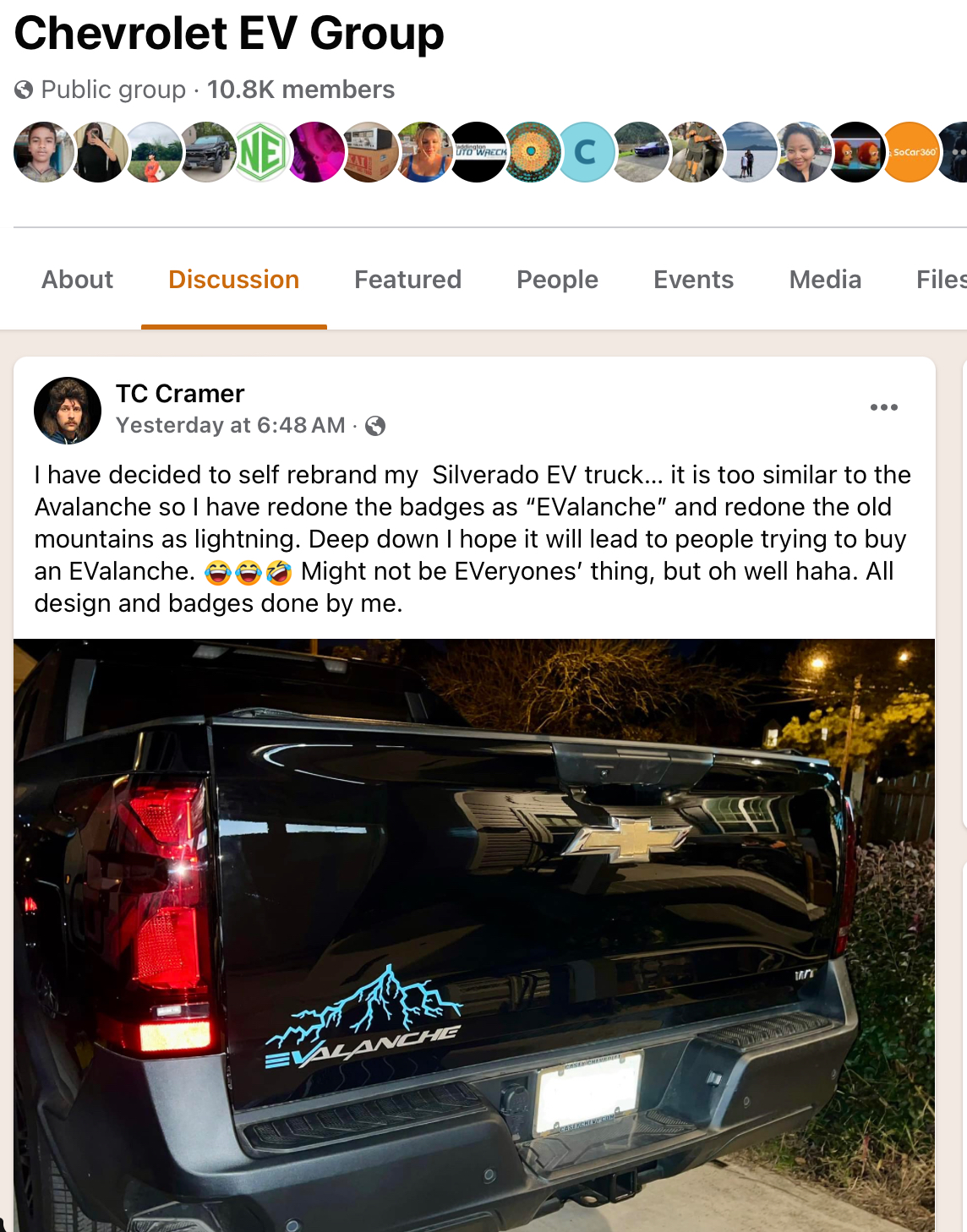Sign up for daily news updates from CleanTechnica on email. Or follow us on Google News!
In 2001, General Motors decided to take the world of the pickup truck and the SUV in a very different direction, producing the Chevrolet Avalanche. While the 2000s might not seem like a very innovative era in U.S. domestic vehicle design, this was one of the bright spots. But, with the special vehicle ending production in 2013, the truck world has been missing out. Now, the Silverado EV has changed all that by bringing back the truck’s most special feature.
In this article, I want to talk about what made the Avalanche special, why the Silverado EV brought some of that joy back to the industry, and then discuss what GM should consider doing here.
Automakers Scrambled To Adapt To Demand For Trucks
During the late 1990s, General Motors took cars and trucks in a somewhat boring and sterile direction. Most of the cars became front-wheel-drive econoboxes, even if they had more powerful and more efficient engines than their predecessors. This was also the beginning of massive growth in the SUV craze, with previously utilitarian vehicles like the Suburban becoming common fixtures in suburban driveways and even urban parking spots. For the first time, luxury trucks like the Cadillac Escalade came into being to take advantage of this trend.
What made the SUVs of this era special is that they were really trucks. Today’s SUVs are mostly based on unibody front-drive car designs, but made larger, built more tough in some cases, and often given more ground clearance. But, at their core, they have the same transverse engine layout that the economy cars of the ’90s came with. Instead of four-wheel-drive, all-wheel-drive crossover SUVs have a rear differential that takes some power from the front transaxle.
SUVs of the ’90s were still trucks, with a body-on-frame chassis, longitudinal drivetrain layouts, and rear-wheel-drive or four-wheel-drive. This made them much better for rougher off-road duty, towing, and other tasks that required a rigid frame or equal power to all four wheels. But, for people driving them around town, this usually meant a less refined on-pavement ride, lower fuel efficiency, and higher costs without getting any real functional benefit.
Crossovers (car-based SUVs) were a response to this, giving people the benefits of SUVs that could be enjoyed in commuter and city duty with lower costs, better efficiency, and better comfort. But crossovers were not the only response to drivers wanting a truck. Automakers were trying to adapt to and capitalize on this trend in myriad other ways, both in terms of making things better for drivers and making the trucks serve better in suburban or urban duty.
The Midgate Tries To Deliver Something between Truck and SUV
Decades before, when trucks were largely beasts of burden, most trucks had three seats, two doors, and a long bed that could haul lots of stuff. They were optimized for work. But, as people started buying pickup trucks for family duty on pavement, needs shifted. Extended cabs became more normal, some with little jump seats for occasionally hauling an extra person or two. Then, four-door trucks became the norm, even for trucks as small as the S-10. This gave families the extra seats they needed.
Though, the extra seating usually came at the expense of less bed space. Why? Because almost nobody not doing serious work wants a crew cab truck with a full 8-foot bed. That length of truck means trouble parking, trouble maneuvering in the mall parking lot, and all sorts of other headaches. Despite the desire for a shorter truck with a longer cab, many suburban pickup owners take a monthly trip to Home Depot, and want to be able to pick up a full 4×8 sheet of plywood, even if that’s not something they normally really do.
The solution was to make a special version of the Suburban (a short-bed truck that has the back covered over to be an SUV) and instead make it have a bed behind the second row of seats, but keep it all one body piece like the Suburban (no seam between cab and bed). Then, the company’s designers removed the wall between the bed and the second row, instead installing a “midgate” hatch that can be removed, opening up a large truck bed again.
For security and keeping out of the weather (mostly), the company made it possible to keep the rear window in place and put a tonneau cover over the bed. This opens up a vault that’s protected from casual theft while still having room for the benchmark of 4×8 sheets of plywood.
This design was adapted to some other vehicles, with a Cadillac version of the same vehicle, and the midgate concept appearing in the GMC Envoy XUV (same smaller platform as the TrailBlazer) and the Hummer H2 SUT (same platform as the Avalanche).
The Midgate Is Back, Riding Atop A Big Battery Pack
For years, there were no midgate vehicles for sale new from the factory, but the Avalanche and its variants/cousins enjoyed a following. Many people loved the versatility of the design, but felt discouraged as their vehicles aged and made their way toward the junkyard. So, when the Silverado EV was announced with sail panels (the slanted sections behind the cab) reminiscent of the Avalanche, everyone was hoping that a midgate would be available.
Want some proof that Avalanche fans are excited? Here’s a post from Facebook showing an owner who created his own electric Avalanche through the art of re-badging:
While obviously not official, it’s very tastefully done and will probably make some people think there’s an electric Avalanche on the market. It’s not officially true, but it’s really true in many ways. I think that Chevrolet should consider making it official, at least with an “Avalanche” trim people can order from the factory, sort of like the Redline trims. In addition to some special badging, some special features or even some literal trim reminiscent of the old Avalanche could be offered.
Either way, it does show that interest in EVs is picking up in many segments of the population that aren’t necessarily going into it for ecological reasons. It also shows that there are many people who are waiting for an EV that gives them features or capabilities that a Tesla or Chevy Bolt can’t offer.
Featured image: a screenshot from the post shared here (fair use).

Chip in a few dollars a month to help support independent cleantech coverage that helps to accelerate the cleantech revolution!
Have a tip for CleanTechnica? Want to advertise? Want to suggest a guest for our CleanTech Talk podcast? Contact us here.
CleanTechnica uses affiliate links. See our policy here.
CleanTechnica’s Comment Policy





